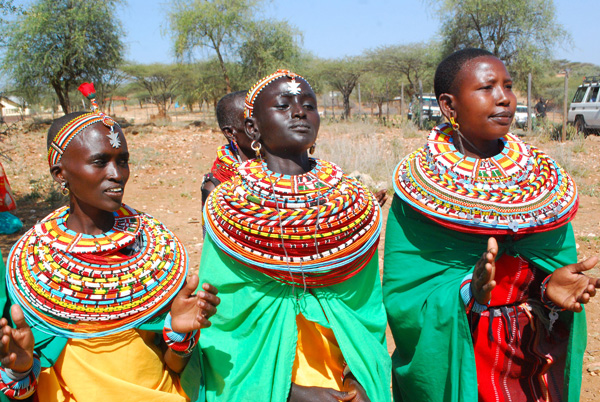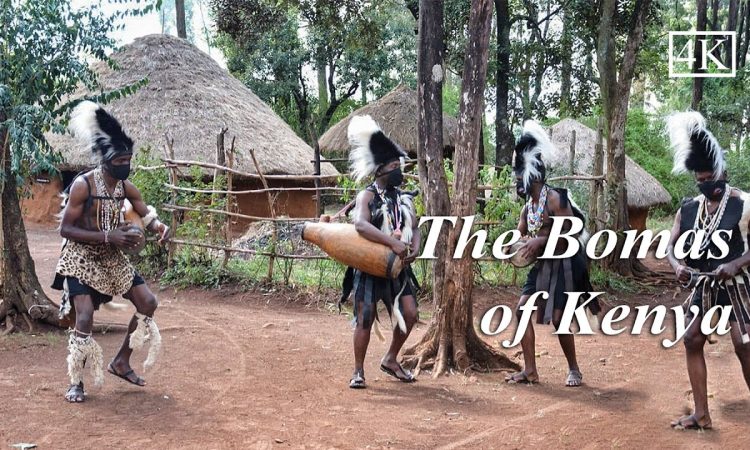Enjoy Cultural Tours on your Kenya Safari with Explore Rwanda Tours : Most of us have long fantasized about visiting nature, beaches, and going on adventures, but we offer an alternative for you. Kenya Cultural Tours reflects Kenya’s 42 tribes’ finest forms of traditional culture. Although we spend the most of our time in remote communities, Kenya’s cities and townships have their own distinct culture. Each city’s architecture, gastronomy, art, fashion, and other characteristics represent an eclectic combination of civilizations and ethnic creeds. The Masai and Samburu are two of Kenya’s 42 tribes that are frequently seen because their customs have been preserved to this day.

Visit to a Masai/Samburu Village
The vibrant colors of their clothing, mostly red shukas or sheets, and the beautifully beaded jewelry – necklaces, bracelets, and amulets – worn by the women and men, are the first things you will notice upon entering a hamlet. Their beadwork art is incredibly beautiful and has a purpose more than decoration; they utilize these handcrafted items to show their identity and social position. You may help the community by purchasing something while also bringing home a genuine keepsake from your trip.
The Maasai are famous for their call-and-response singing and adumu, or “jumping dance.” The warriors form a circle with one person in the center, and the dancer jumps higher and higher to the rhythms of the singers. As he jumps higher, the singers’ voices will get higher in pitch. You will also be welcome to join the dancers inside the circle, which will add to the fun.
A personal encounter with the elderly, who gladly share their wisdom, may enhance your village visit. You will also have the opportunity to see Maasai dwellings, known as Bomas. The Maasai women are in charge of creating these little houses with thatched roofs. To build a building, they begin with a framework of timber poles and weave smaller branches together.
This is then covered with a mixture of dirt, grass, cow dung, urine, and ash. The men assist in the construction of the home, but it is their responsibility to create the protective fencing that surrounds the community to keep lions and other predators away from the animals.
You may also be invited to a traditional wedding, other rites of passage such as warrior ceremonies, or to witness the village women making the wonderful beaded jewelry for which both tribes are famed.
Kenyan Bomas
Bomas of Kenya takes you on a cultural centre trip in Lang’ata, Nairobi, introducing you to Kenya’s 23 major tribes and their residences. This cultural centre was founded in 1971 and provides travelers with vivid picture of a variety of ethnic groups that exist in Kenya and their distinct ways of life, both in ancient times and in the present. The term “Bomas” means “homestead,” and there are many traditional mud dwellings, each representing one of Kenya’s major ethnic groups.

Each traditional house is built in line with the ancestors’ original traditional architecture of an African dwelling. Acrobatic acts and traditional dances from local tribes like as Kikuyu, Kalenjin, Luhya, Taita, Masai, Kamba, Kisii, Kuria, Mijikenda, and Luo can be expected when visiting Kenya’s Bomas.
Maasai Communities at Loita Plains in Narok.
The Maasai are one of Africa’s few indigenous tribes whose culture has survived. The Maasai are a fierce warrior tribe famed for their strength and self-assurance. They are distinguished by their brilliantly coloured attire, jewellery, and spear-wielding habit. Because the Maasai rely primarily on their livestock, they live a nomadic existence in search of pasture/water. The Maasai live in villages or small communities of 8 to 15 houses. Thorn barriers and plants protect the communities from predators.
The bulk of visitors to the Maasai Mara stop in Loita Plains near Narok. During this visit, a Guide takes guests to the Maasai homesteads. While staying with the Maasai, tourists may help them care for their goats, sheep, and cattle. There is also an opportunity for travelers to meet the elders and learn more about Maasai history and culture. You may spend the evening with the Maasai, listening to folk music, telling stories, and dancing around the campfire.
The Luo Community in Kenya.
The Luo are one of Kenya’s three largest tribes. The group departed South Sudan and travelled to Kenya through Uganda. The bulk of them currently live in Kisumu or the neighbouring Nyanza province, which is close to Lake Victoria. You will not only learn about the rich culture of the Luo people, but you will also view Lake Victoria and the Kit-Mikayi. Kit-Mikayi is a rock formation of historic importance for the Luo people. Many villages still flock to this rock to worship and give donations.
The Predominant Islamic Community in Lamu.
Lamu is Kenya’s oldest seaside town. It is an archipelago comprised of various islands, one of which being Kiwayu. Lamu, Kenya’s largely Swahili and Muslim town, is one of the best places to experience Swahili culture. It’s also a great place to learn about the first Arab traders who came in the 11th century. Dhows and donkeys are still used to cross the Indian Ocean and on the island.
On a typical visit, visitors spend time exploring the town’s narrow lanes before moving off to explore the stunning beaches of the surrounding islands. Swimming with dolphins, as well as other water activities, are accessible on Lamu. By the end of your trip, you would have seen beautiful landscapes, historic structures, and learnt a lot about the Swahili language and culture.
Visit the Turkana and El Molo Communities.
The Turkana, like the Maasai, are pastoralists who dwell in northern Kenya. They must wander from place to place in search of new pasture and water for their animals since the location where they live is arid. As climate change and soil degradation become more frequent, the Turkana are gradually adopting alternative livelihood methods.
They are presently employed in towns or as fishermen on Lake Turkana. Turkana offers an outstanding cultural experience comparable to that of the Maasai. A journey to Lake Turkana would be incomplete without a stop at the endangered El Molo tribe.
Encounter the Kamba Tribe in Machakos.
Community culture trips in Kenya will allow you to meet members of the Kamba ethnic tribe. The Kamba are a well-known and hostile tribe in Kenya. The most of them live in Machakos. This town is quickly becoming a popular tourist destination, and substantial development work has been completed in recent years. A whole national park was recently established in Machakos, where visitors may observe some of Kenya’s famous wildlife.
In summary; Kenya has a rich cultural heritage which can be distinctly seen as you travel through different parts of the country during your Kenya Safari; and the most important thing to note is that each culture is very welcoming to visitors with locals eager to share a part of their culture with you. So, while on your wildlife safari in Kenya with Explore Rwanda Tours, do make it a point to include a cultural tour in your itinerary!


